Papers by Gianluigi Bacchetta
Italian botanist, May 22, 2023
In this contribution, new data concerning the distribution of native vascular flora in Italy are ... more In this contribution, new data concerning the distribution of native vascular flora in Italy are presented. It includes new records, confirmations, and exclusions to the Italian administrative regions. New combinations in the genera Pilosella and Roemeria are proposed. Furthermore, the name Papaver siculum is lectotypified. Nomenclatural and distribution updates, published elsewhere, and corrigenda are provided as Suppl. material 1.

<p>The reclamation of highly degraded abandoned mine tailings subjected to ... more <p>The reclamation of highly degraded abandoned mine tailings subjected to the pollutants dispersion in the surrounding areas is a crucial socio-economic issue. The use of plant species locally adapted with complementary ecological functions of the contaminated site and well-adjusted to the low soil functions without interfering with the local biodiversity is considered as a recovery technique.</p><p>The pioneer plant species <em>Pinus halepensis</em>, is growing spontaneously in Sardinian mine tailing dumps (SW- Sardinia, Italy) characterized by extreme concentrations of pollutants, mainly Zn, Pb, and Cd. In this study, a sampling campaign was done, related to plant materials (roots, barks, wood, and needles) and soils, aimed at assessing metal content, plant accumulation, and translocation behavior as well as the main mineralogical characteristics of the soil-plant system in a multidisciplinary approach.</p><p>Mineralogical compositions of substrates and roots assessed through X‐Ray Diffraction (XRD) detected mainly pyrite, dolomite, calcite, quartz, gypsum, and barite in the polluted substrates with the presence of iron sulphate, iron oxide as well as Zn, Pb, Cd, and other elements (Al, Si, and Fe) in different amounts on the plant root surface. Zn ore minerals (smithsonite) and muscovite were mostly in the deeper soil horizon. Zn was the most abundant metal in the substrate as well as all investigated plant tissues. The highest metals concentration range in the soil samples collected around the plant roots were measured for Zn (9043.2 -15299.52 mg kg<sup>-1</sup>), Pb (1604.47 – 4413.29 mg kg<sup>-1</sup>), and Cd (46.11 -58.54 mg kg<sup>-1</sup>). <em>P. halepensis </em>roots accumulated high metal concentrations (664.65 - 2710 mg kg<sup>-1</sup> Zn, 58.39 - 735.88 mg kg<sup>-1</sup> Pb, and 4.86 - 11.02 mg kg<sup>-1</sup> Cd) mirroring the high metal-contamination in soil and plant's ability to tolerate highly metal polluted mine sites.</p><p> The Phyto-stabilization potential of the plant was calculated through the biological accumulation and translocation parameters reported below one for all investigated plant tissues. Metal Translocation Factor (TF) detected in needles for Pb, Zn and Cd ranged between 0.03-0.32, 0.03-0.19, and 0.04-0.14, respectively and Cd TF (0.05-0.2) was more in wood than needles (0.04-0.14). Biological Concentration Factor (BCF) values of Cd, Zn and Pb were estimated to be 0.11-0.19, 0.07-0.18 and 0.02- 0.17, respectively.</p><p>The low metal TF rates indicated that the pioneer woody plant species <em>P. halepensis</em> behaves as an excluder. Thus, we can consider it as a promising plant that tolerates high concentration of Zn, Pb, and Cd and restrict the accumulation and translocation of metals to the aerial parts, performing his role as a woody plant species for long term reclamation, Phyto-stabilization, and re-vegetation process in abandoned mine tailing sites of arid and semiarid Mediterranean regions.</p>
Biodiversity Hotspots in the Mediterranean Area: species, communities and landscape level., 2009
Frontiers of biogeography, 2014
How to cite Complete issue More information about this article Journal's homepage in redalyc.org ... more How to cite Complete issue More information about this article Journal's homepage in redalyc.org Scientific Information System Network of Scientific Journals from Latin America, the Caribbean, Spain and Portugal Non-profit academic project, developed under the open access initiative
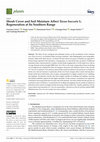
The effect of key ecological and anthropic factors on recruitment of the common yew (Taxus baccat... more The effect of key ecological and anthropic factors on recruitment of the common yew (Taxus baccata) in Sardinia (Italy) has been analysed. After a bibliographic and cartographic research, followed by field surveys, we found 232 sites where T. baccata grows in Sardinia (opposed to 69 previously reported in literature). Among them, we selected 40 sites, distributed in 14 different mountain chains, characterised by a number of individuals ranging from 11 to 836 adult yews with average Diameter at Breast Height (DBH) from 13 to 130 cm. By means of generalised linear modelling, we investigated and weighted the effect of ecological, structural, and anthropic factors on amount of T. baccata recruitment. Stand recruitment was positively correlated to shrub cover and soil moisture, and was negatively correlated to browsing (both from livestock and wild animals). Our data confirm that the presence of a protective layer of bushy and/or spiny shrubs is a crucial factor for seedling and sapling ...
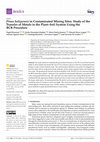
Toxics
The study aimed at evaluating the geochemical fractions of Zn, Pb, Cd and their bioavailability i... more The study aimed at evaluating the geochemical fractions of Zn, Pb, Cd and their bioavailability in soil in-depth and around the root of Pinus halepensis grown on heavily contaminated mine tailing in south-western Sardinia, Italy. The contaminated substrates were partly investigated in a previous study and are composed of pyrite, dolomite, calcite, quartz, gypsum, barite, iron-sulfate and iron-oxide. The geochemical fractions and bioavailability of Zn, Pb and Cd were measured through the BCR extractions method. Cadmium in the superficial contaminated substrates was mainly found in the exchangeable BCR fraction. Zinc and lead were often found in the residual BCR fraction. PCA confirmed that the uppermost alkaline-calcareous layers of mine waste were different with respect to the deeper acidic layers. We demonstrated that Pb and Zn were less present in the exchangeable form around the roots of P. halepensis and in soil depth. This can be due to uptake or other beneficial effect of rhiz...
Italian Botanist
In this contribution, new data concerning the distribution of vascular flora alien to Italy are p... more In this contribution, new data concerning the distribution of vascular flora alien to Italy are presented. It includes new records, confirmations, exclusions, and status changes for Italy or for Italian administrative regions. Nomenclatural and distribution updates published elsewhere are provided as Suppl. material 1.
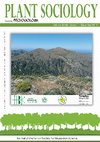
The Mediterranean Basin is one of the world's most biodiverse regions and it roughly counts 30,00... more The Mediterranean Basin is one of the world's most biodiverse regions and it roughly counts 30,000 different plant taxa, of which approximately 50% are endemic taxa to the region. Thus, this area has been recognized among the world's 34 biodiversity hotspots. Furthermore, the rate of endemism of the big Mediterranean islands is higher than that usually recorded in the neighbouring mainland areas. Plants are vulnerable to many threats mainly represented by physical factors, such as climate change, extreme weather events, recurrent fires, agriculture, as well as by biological factors, such as invasive species and pests. All these factors are particularly worrying in island ecosystems where urban sprawl and human activities may represent a major source of threat hampering the preservation of important habitats and plant species, especially when circumscribed to small areas. In addition, less than 10% of these areas is protected (e.g. nature reserves, regional or national parks, etc.) and, likely most worrying, their management is not always based on the specific scientifically based plant needs. Given these circumstances, many plant species of the Mediterranean area are facing the risk of a severe decline and require urgent protection measures. While in-situ conservation is the fundamental approach to biodiversity conservation, ex-situ conservation is an alternative and effective way to prevent immediate extinction. The CARE-MEDIFLORA project, an initiative of eigh institutions all having a long experience in plant conservation, will make a step forward by using ex situ collections to experiment with in situ active management actions and measures for some taxa within the period of three years of the project. The involved institutions will jointly work to address both short-term and long-term needs, including: (1) in situ conservation for some of the most endangered plant species of the Mediterranean islands through active management actions (e.g. reintroduction, reinforcement, fencing, etc.), in collaboration with the most relevant local authorities to ensure the sustainability of the results; (2) ex situ conservation of the most endangered plant species of the Mediterranean islands through the collection and seed banking of accessions that will be representative of the overall diversity of the selected taxa; (3) establishing a network connecting scientific institutions from the Mediterranean islands in order to ensure the circulation of information, knowledge and project results sustainability. In addition, great efforts will be devoted to the training of conservation plant specialists, in order to increase collaboration among institutions dealing with in situ and ex situ conservation and to increase awareness about the vulnerability of the native flora through the involvement of local stakeholders and environment-related agencies.
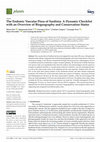
The vascular flora of Sardinia has been investigated for more than 250 years, with particular att... more The vascular flora of Sardinia has been investigated for more than 250 years, with particular attention to the endemic component, due to their phylogeographic and conservation interest. However, continuous changes in the floristic composition through natural processes, anthropogenic drivers or modified taxonomical attributions require constant updating. We checked all available literature, web sources, field and unpublished data from authors and acknowledged external experts to compile an updated checklist of vascular plants endemic to Sardinia. Life and chorological forms, and the conservation status of the updated taxa list were reported. Sardinia hosts 340 taxa (15% of the total native flora) endemic to the Tyrrhenian islands and other limited continental territories; 195 of these are exclusive to Sardinia. Asteraceae (50 taxa) and Plumbaginaceae (42 taxa) are the most representative families, while the most frequent life forms are hemicryptophytes (118 taxa) and chamaephytes (10...
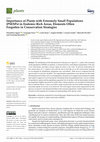
Plants, 2021
The distribution of the threatened fern Ophioglossum vulgatum L., a plant with extremely small po... more The distribution of the threatened fern Ophioglossum vulgatum L., a plant with extremely small populations (PSESPs) in Sardinia, is characterized by small disjunct populations with only a few individuals, and little is known about its status in the wild. To provide information for the conservation of O. vulgatum and with the aim to develop an in situ conservation strategy, we investigated its distribution, population size, and habitat. Field surveys confirmed that the species grows in only five localities. Two representative populations were selected for this study (Funtanamela and Gedili), and in each population, all plants were mapped and monitored monthly from April to August over an 8-year period. During the study, the populations had a very low number of reproductive plants and the populations appeared to be in decline, with the total number of plants per population slightly decreased in Gedili while a sharp reduction was recorded in Funtanamela due to wild boar threat. A fence...
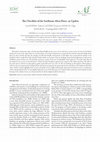
Alien plants colonization, due to the fast spreading of highly invasive taxa, is more and more a ... more Alien plants colonization, due to the fast spreading of highly invasive taxa, is more and more a serious source of concerns for habitat and species conservation. Apart direct in situ intervention, it is of major importance to acquire the best and up to date knowledge about alien taxa that currently threaten the integrity of wild and valuable environments. In this light, here is presented the update to the checklist of alien vascular flora of the island of Sardinia (Italy) on the basis of the new findings, nomenclatural adjustments, and revision of diffusion status of alien taxa. The checklist at present, consists of 541 taxa (84 doubtful) which represent 17 % of the whole flora of the island; 22 taxa are new to the island and 7 of them for Italy. Neophytes represent the majority of the whole alien flora (301, 66 % of the total) and, in confront to archaeophytes, gather nearly all invasive taxa (54 vs 4). The new findings are all neophytes. Phanerophytes (42%) are the most representa...
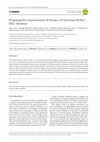
Plant Sociology, 2021
The ‘Habitats’ Directive (HD 92/43/EEC) is one of the primary legal tools aiming at conserving na... more The ‘Habitats’ Directive (HD 92/43/EEC) is one of the primary legal tools aiming at conserving nature in Europe. Due to the complex iter to revise it, the habitats listed in the Annex I have been seldom updated after the HD adoption. Basing on already available information and expert knowledge, this paper presents a preliminary list of relevant habitats occurring in Sardinia, not yet considered and worth to be placed in the Annex I. Two new habitat proposals, one habitat new for Italy, and nine new subtypes of already existing HD habitats are here described. Most of the proposed new habitats and subtypes have a limited distribution range, due to the high number of narrow, often endangered, endemic species that characterize them. Being neglected, they are consequently poorly investigated, inconstantly monitored and unprotected. Thus, the main aim of this paper is to promote their conservation through implementation of HD and its interpretation manuals.
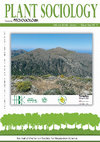
The results of a project for the identification of species-specific monitoring protocols for the ... more The results of a project for the identification of species-specific monitoring protocols for the Italian plant species protected under the Habitats Directive (Annexes II/IV/V) are presented. The project led to the development of 118 monitoring factsheets, providing an operational guidance for 107 vascular taxa, 10 bryophytes and 1 lichen taxon. Each factsheet includes information on the species (distribution, biology, ecology, conservation status, threats, etc.) and the description of field methodologies for the detection of the two main reporting parameters, i.e. population size and habitat quality. Practical information to plan field activities are also given. Protocols were designed to address the requirements of the European reporting system with the aim to standardize future monitoring activities, optimize efforts at national scale and overcome some current problems related to data heterogeneity and discrepancies from the EC standards. More than 60 botanists collaborated to ide...
Adaptive responses to human impacts in the threatened Webb's hyacinth (Bellevalia webbiana Parl.,... more Adaptive responses to human impacts in the threatened Webb's hyacinth (Bellevalia webbiana Parl., Asparagaceae) • T. Abeli, S. Orsenigo (12 + 3 min) Recognizing the role of ecological studies in plant translocation: review and perspectives











Uploads
Papers by Gianluigi Bacchetta